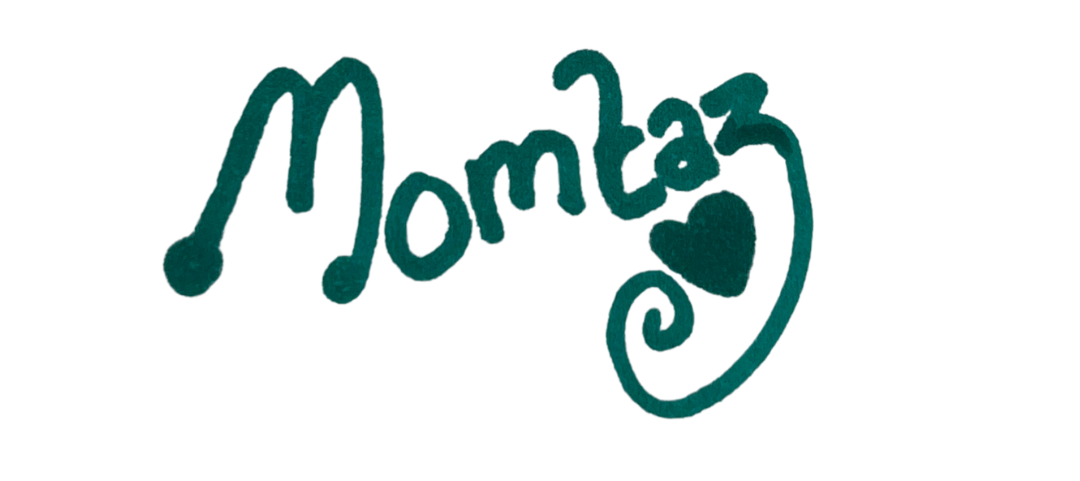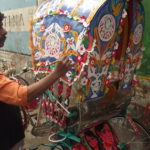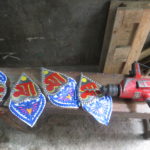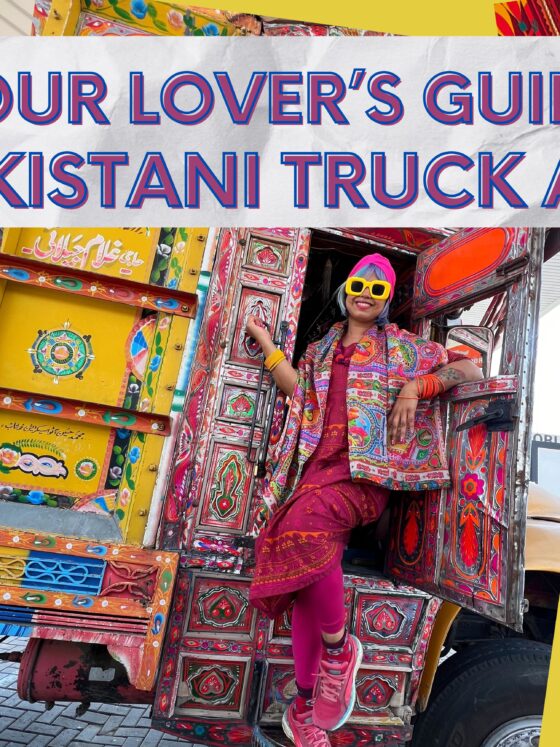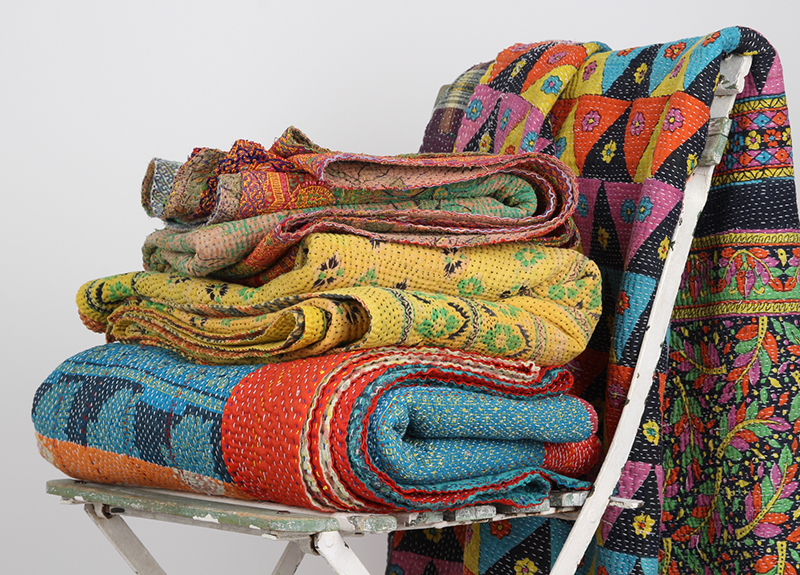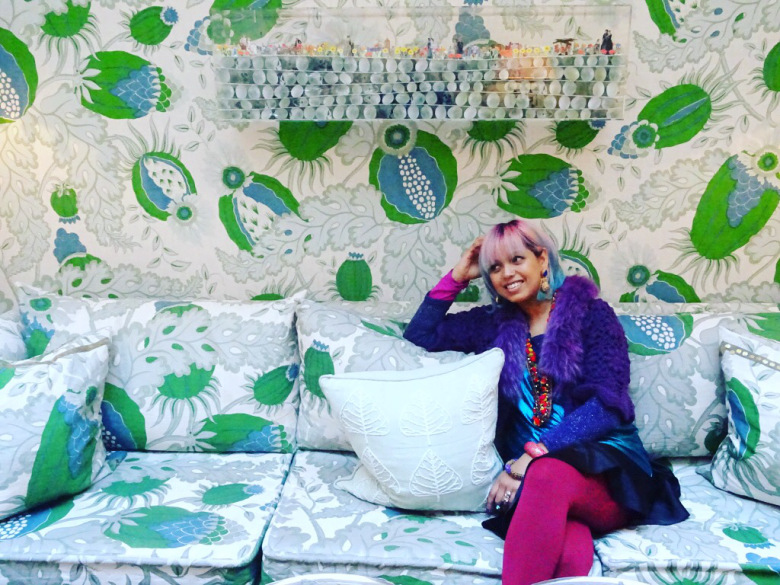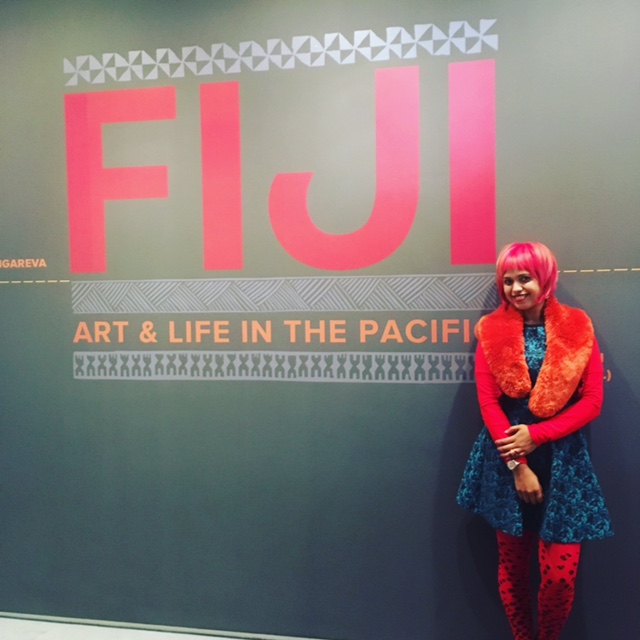Rickshaw Art of Dhaka, Bangladesh
The beauty of cart art
Rickshaws are what makes Dhaka, Dhaka. Bringing colour, creativity and character to the city; and more importantly a means of living to over a million people, there are an estimated 1/2 million rickshaws in Dhaka today.
Rickshaw art is considered ‘street art’ literally as it’s only viewable when you’re actually on the streets. In fact the best way to see it is to board a rickshaw yourself and be taken around the roads, alleyways and labyrinths of new and old Dhaka where a living, moving, changing, live art gallery surrounds you.
Also referred to as The People’s Art, rickshaw art makes art accessible to everyone, even the poorest in society, most of whom are rickshaw-wallahs themselves. Instead of it being an art form that is housed inside public galleries, rickshaws roam freely, allowing anyone and everyone to appreciate their beauty.
What is a rickshaw?
A rickshaw is essentially a three -wheeled bicycle with a carriage attached which seats people and luggage. They are cycled through the streets by a rickshaw-wallah transporting members of the public to where ever they wish to go. While the rickshaw itself is rented by the rider/driver/puller known as a rickshaw-wallah; there are many others involved in the rickshaw industry: the owners who commission them to be made, builders, constructors, artists, painters and their apprentices.
Rickshaw-wallas are male and typically under 30, most have come from rural areas to Dhaka in search of work. The physical demands of the job are extreme and the industry isn’t regulated in terms of limits and what is an acceptable distance to expect a rickshaw-wallah to ride, it’s up to their own endurance. Rickshaw journeys are the cheapest form of transport and all fares are negotiable.
Parts of a rickshaw
A rickshaw consists of several key sections. They are mainly made from recycled materials:
Handle bars: Often decorated with tassels, bells, plastic flowers, tinsel and sparkling fabrics
Frame: Decorated with painted details and patterns
Hood: Luggage like suitcases can be stored here, or additional passengers; they can be pushed up to create a shade for passengers, pushed down, or detached and are decorated with paint or appliqué; the backs are particularly elaborate
Back plate: This is the main section where the rickshaw painting is seen
The art on the cart
The themes apparent in rickshaw art vary, but they are often inspired by popular culture so it’s not uncommon to see images that depict film posters or film stars as well as iconic images of rural life, prominent people, architecture, animals, moments in history, flowers and fauna.
The owner has some influence over what designs feature on their rickshaw but usually they agree a price with the artist who will be painting it, who then has the freedom to paint it as they wish. The decoration of the rickshaw accounts for around a quarter of the total cost of buying one. Artists normally sign or mark the work so it’s possibly to identify who has painted it. There aren’t too many rules surrounding rickshaw art copyright and artists are commonly inspired by each other.
How to see rickshaws being made
Rickshaw workshops can be found throughout Dhaka. There isn’t a specific hub; most are tucked away up back streets but it’s possible to visit one by asking around until someone (usually a rickshaw-wallah) knows of one and agrees to take you. Not every rickshaw rider knows where to find them so keep asking or enlist their help to ask around until someone can guide the way. The Lonely Planet guidebook I had on me referred to ‘Bicycle Street’ as a place to see these workshops…it may have been at some point but there wasn’t a single rickshaw workshop there when I visited and no one in the street including rickshaw-wallas knew of any there either.
Unfortunately I don’t know the exact location of the workshop I was taken to by my rickshaw-wallah but it wasn’t too far from Bicycle Street.
At the workshops its possible to buy rickshaw art direct from the artisans, at a much cheaper and fairer price than any rickshaw art you’ll find sold in shops; the money goes direct to them for a start. I purchased two metal back plates and a full size vinyl painting for £15. They have the signature PC Das on them; who I later discovered is the nephew of one of the cities most prominent painters; RK Das.
Rickshaws can be found all over Bangladesh and in other countries, but it’s Dhaka that is the hub of rickshaw art; the standard and craftmanship of which is so high that seeing them in person, is enough reason to make a trip here.
